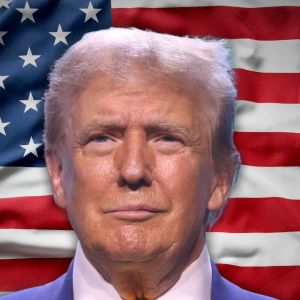Crypto market cap adds $1 trillion in the last year – Finbold report
5 min read
The global cryptocurrency market has added $1 trillion in value over the past year, climbing from around $2.28 trillion last June to $3.29 trillion on June 25, as revealed by data sourced from CoinMarketCap and analyzed by Finbold. This 43% surge in total market capitalization underscores a broad-based crypto rally, but the gains have been unevenly distributed across categories. Crypto market cap 1-year. Source: CoinMarketCap Bitcoin ( BTC ) has led the charge, swelling its market cap by about 74.7% to approximately $2.13 trillion, which solidifies BTC’s dominance at roughly 60% of the entire market. Crypto market cap 1-year distribution. Source: CoinMarketCap Stablecoins (USD-pegged digital tokens used for liquidity and trading) also expanded by 51.5%, now making up over $230 billion of the market – a sign of significant new capital parked in crypto’s dollar-based rails. The aggregate value of “Other” cryptocurrencies – essentially all non-Bitcoin, non-Ethereum, non-stablecoin assets has grown about 26.9% year-on-year, reflecting healthy if more modest growth in altcoins broadly. In stark contrast, Ethereum ( ETH ) (the second-largest crypto) has lagged dramatically: Ether’s market cap actually shrank 28% over the year, dropping from roughly $408 billion to about $292 billion. As a result, Ethereum’s share of the total market has nearly halved (down to only 9% of crypto’s value), even as Bitcoin’s dominance has surged to multi-year highs. Such a substantial $1 trillion upswing in crypto’s collective valuation did not occur in isolation. It has been bolstered by a confluence of positive forces from a seismic shift in U.S. political/regulatory climate to strong institutional investment flows and the rollout of new cryptocurrency investment vehicles. These tailwinds have not only driven Bitcoin to new heights ($111,970 per coin in May) but have also fostered a sense of renewed momentum in the broader digital asset space. Below, we break down the key factors behind crypto’s remarkable past-year run. Trump’s pro-crypto turnaround A major factor energizing the crypto market has been the political sea change in the United States. The election and January inauguration of President Donald Trump for a second term marked a stark pivot in U.S. crypto policy. Trump campaigned on making America “a hub for digital asset innovation” and courted crypto enthusiasts with bold promises, firing SEC Chairman Gary Gensler, halting government Bitcoin sales, establishing a strategic national Bitcoin reserve, and crafting friendly crypto policies. Indeed, one of Trump’s first moves in office was expected to be appointing a new, crypto-friendly SEC chair to replace the notoriously stringent Gensler. This promise materialized: under the new administration, the SEC’s leadership quickly took a more accommodative stance, even kicking off a “crypto policy overhaul” to unwind the prior regime’s enforcement-centric approach. The change in tone cannot be overstated, regulators signaled they would “stop suing crypto [companies] and start talking to crypto,” in the words of one industry advocate, a sharp departure from the aggressive clampdowns of years prior. Crucially, Trump’s own actions have directly bolstered crypto sentiment. In a striking show of support, President Trump literally entered the crypto arena himself by launching a personal crypto token called Official TRUMP ( TRUMP ) around his inauguration in January. The meme coin token’s debut was met with frenzied trading: TRUMP rocketed from about $10 to over $74 within days, at one point achieving a staggering paper valuation near $8.9 billion. While clearly a highly speculative venture, the token’s brief success underscored the feverish enthusiasm among Trump’s base and crypto traders for anything associated with the new President’s name. Just days after TRUMP launched, two asset managers (REX Shares and Osprey Funds) even filed for a “Trump Meme Coin ETF” to package the token into an exchange-traded fund. Institutional FOMO: Wall Street pours billions into crypto Another critical driver of the past year’s crypto resurgence has been heavy institutional investment, particularly via new Bitcoin-focused funds and ETFs. In 2024, U.S. regulators allowed the first spot Bitcoin ETFs , and that opening of the floodgates truly materialized in 2025. Over the last year we’ve witnessed nothing short of an institutional buying frenzy for Bitcoin, as traditional finance titans race to secure their piece of the digital gold rush. Nowhere is this more evident than in the actions of the world’s largest asset managers. BlackRock , the $9 trillion asset giant, and Fidelity, the $4+ trillion brokerage behemoth, have been accumulating Bitcoin at an unprecedented scale through their crypto fund offerings. On June 24, 2025, blockchain records flagged by Arkham Intelligence showed that BlackRock and Fidelity collectively scooped up over $521 million of BTC in a single day . BlackRock’s iShares Bitcoin Trust ( IBIT ), the firm’s spot Bitcoin ETF vehicle received a mammoth inflow of 4,130 BTC (roughly $436 million worth) in one day, sourced from Coinbase’s institutional custody platform. On the same day, Fidelity’s own Bitcoin fund (ticker FBTC) grabbed 805 BTC ($85 million), via a pair of large OTC transactions into its custodial wallet. These massive purchases underscore how major institutions are methodically building exposure on any market dips. Such daily buys by two of Wall Street’s biggest names were part of a broader trend of sustained ETF inflows. In fact, that late-June day marked an inflection point: in total, U.S. spot Bitcoin and Ethereum ETFs saw over $659 million in net inflows on June 24 alone, the largest one-day influx on record. BlackRock is competing with Strategy As of late-June, BlackRock’s ETF held roughly 683,185 BTC (over $73 billion worth), putting BlackRock neck-and-neck with (or ahead of) Michael Saylor’s famed Bitcoin stash at Strategy (formerly MicroStrategy). Speaking of Saylor: corporate accumulation has continued unabated alongside the ETF frenzy. Saylor’s company Strategy has been buying Bitcoin relentlessly week after week, recently even during price dips caused by geopolitical news. Between BlackRock’s ETF and Strategy’s treasury, over 1.147 million BTC are now held by just these two institutions, a decent percentage of Bitcoin’s total supply. Add in other players like Grayscale, which despite recent outflows has started adding to its GBTC trust again (even a modest +55 BTC in late June), and it’s clear that institutions are now a dominant force in the crypto market. Their sizable allocations have provided a steady bid supporting prices for instance, Bitcoin has consolidated firmly above $100,000 this summer amid these inflows. And their involvement lends an air of legitimacy that continues to draw even more capital off the sidelines. In short, big money is pouring into crypto. The combination of regulatory approval for exchange-traded products and growing investor appetite for an inflation-hedging, non-sovereign asset class has created a feedback loop: positive market performance begets more institutional interest, which begets more inflows and product launches, further boosting market cap. This institutional momentum has been a key pillar of the $1 trillion market cap increase – a fundamental shift from the retail-driven booms of prior years. The post Crypto market cap adds $1 trillion in the last year – Finbold report appeared first on Finbold .

Source: Finbold


